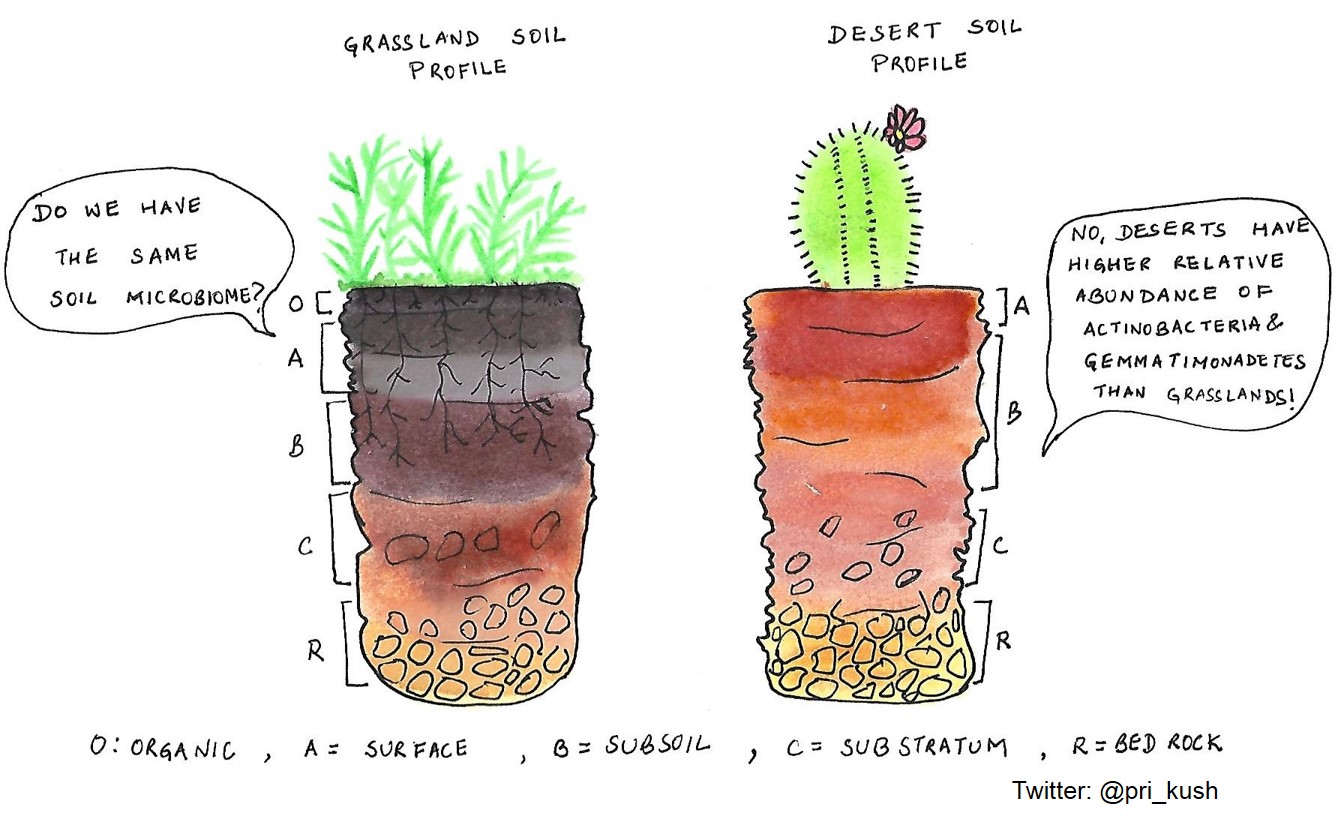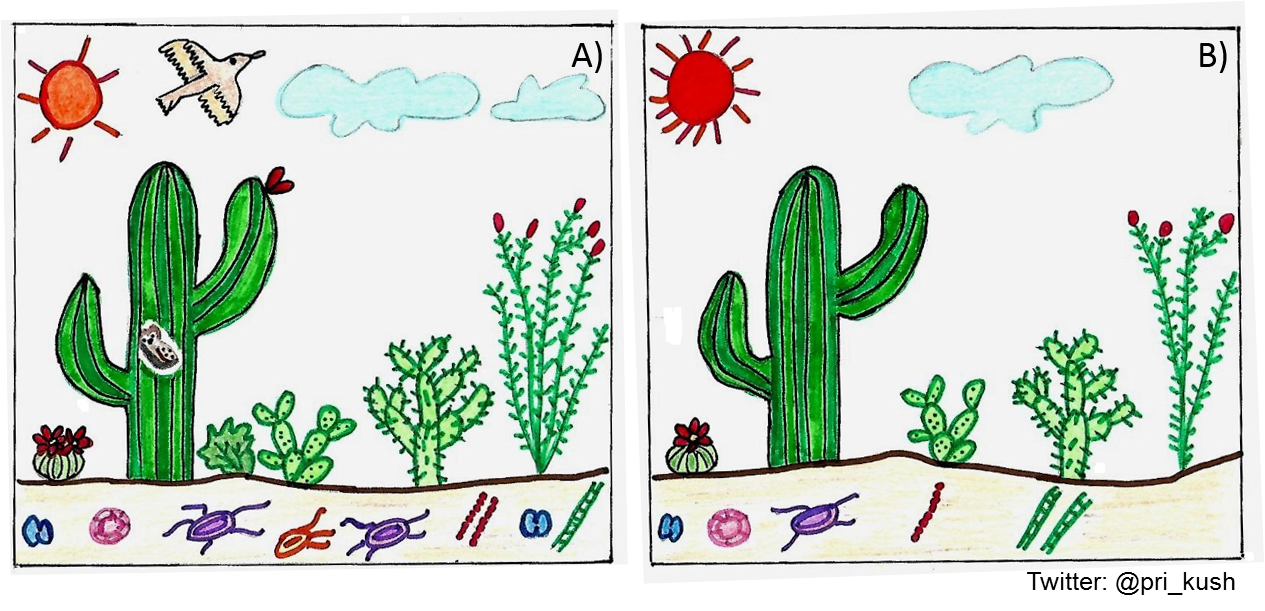12 August 2020
#DrawnToGeoscience: Spot the Differences
Posted by Shane Hanlon
#DrawnToGeoscience is a series of posts by artists who draw about science and explain their process and inspiration while also showcasing their pieces. Learn more about contributing. This week, Priyanka Kushwaha.
In school, my Biology teacher always recommended creating a figure to explain different biological pathways/processes. The purpose of this exercise was not only to save time during long exams but also to succinctly explain complicated scientific processes. I followed this practice from school to undergrad to my PhD coursework. However, once I had completed the course work for my PhD program, drawing disappeared from my science. I was particularly not great at drawing or art. So, I did not miss it until I found a Microbial themed coloring book during my postdoc. I bought the book and some color pencils, and it was no surprise that this process inspired the love for #SciArt in me.
During the first few weeks of lockdown, I spent my weekends coloring microbes, soil, and Sonoran Desert-themed drawings. In addition, I started following scientist who use art for #SciComm and science artists on social media. I was extremely inspired by Drs. Karen Vaughan and Yamina Pressler’s For The Love Of Soil art prints. Fortunately, I was able to attend a live session hosted by Dr. Pressler on how to create whimsical soil profiles using watercolors. There was no turning back from there.
The Sonoran Desert has been my inspiration to create these soil profile paintings. I study the soil microbial diversity and community structure across Creosote-bursage vegetation patches and the interplant open spaces in the western Sonoran Desert. Figure 1 depicts the differences between soil profiles and microbiome across the grasslands and deserts.

Differences in Grassland and Desert Soil Profiles and Microbial Diversity
The second figure is inspired by a drawing activity during AGU Voices for Science 2020 Training Session. I had drawn two panels to depict the effects of increasing temperatures and decreasing rainfall in the Sonoran Desert on the vegetation density and microbial diversity. Post the training, I realized that converting these panels into a Spot the Differences activity for kids would be fun. Briefly, Panel A depicts the current vegetation density and microbial diversity (Year 2020) and Panel B predicts the changes in the next 30 years (Year 2020). I hope to continue using #SciArt for #SciComm and inspire other scientists along the way.

Spot the Differences between the two panels
-Priyanka Kushwaha is a postdoc at the University of Arizona and she studies microbial diversity and community composition in nutrient-limited, arid and metal contaminated soils.



 The Plainspoken Scientist is the science communication blog of AGU’s Sharing Science program. With this blog, we wish to showcase creative and effective science communication via multiple mediums and modes.
The Plainspoken Scientist is the science communication blog of AGU’s Sharing Science program. With this blog, we wish to showcase creative and effective science communication via multiple mediums and modes.